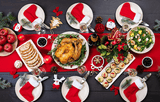Sensory Play Recipes You Can Make At Home
We have compiled a list of easy-to-make sensory play recipes you can try at home with your children. From cloud dough to fluffy slime, these recipes are fun for kids to play with and provide a unique sensory experience. Each recipe has been carefully selected to offer a different sensory experience, whether through touch, smell, taste or sight.
These recipes are perfect for encouraging imaginative play and exploration and can also be used as a calming tool. We encourage you to try them out and see how your child interacts with each one. We hope that you and your child have fun making and playing with these recipes and that they will help support their sensory development and well-being."
- Cloud Dough: Mix 8 cups of flour with 1 cup of oil (such as baby oil or vegetable oil) until it has a smooth, dough-like consistency. Cloud dough can be used for moulding and sculpting and has a silky, smooth texture that is great for sensory exploration.
- Fluffy Slime: Mix 1 cup of white school glue with 1/2 cup of shaving cream and 1/2 cup of contact lens solution. Knead the mixture until it becomes a fluffy, stretchy slime. You can add food colouring or glitter to make it more visually attractive.
- Edible Finger Paint: Mix 2 cups of flour with 1 cup of salt and 2 cups of water. Divide the mixture into separate bowls and add food colouring to each one. This paint is safe to eat and provides a unique texture for exploring.
- Sensory Bins: Fill a container with a base material, such as beans, rice, or sand, and add small toys or items for exploring, such as shells, buttons, or small figures. Sensory bins are a great way to encourage exploration and imaginative play.
- Homemade Playdough: Mix 1 cup of flour, 1 cup of water, 1/4 cup of salt, two tablespoons of cream of tartar, and food colouring in a saucepan. Cook over medium heat, constantly stirring until the mixture forms a ball. Allow it to cool, and then knead until it becomes smooth and pliable.
- Sensory Bags: Fill a plastic bag with a clear or translucent liquid, such as water or hair gel, and add small items, such as beads, glitter, or small toys. Seal the bag and tape it shut. Sensory bags provide a safe and contained way for children to explore the items inside.
- Sensory Bottles: Fill a clear plastic bottle with water, food colouring, and small items such as beads or glitter. Seal the bottle and tape it shut. Sensory bottles can be great for visual exploration and can be a calming tool.
- Oobleck: Mix 2 cups of cornflour with 1 cup of water, adding food colouring if desired. This mixture has liquid and solid properties and can be fun to play with and explore.
Always make sure to supervise children when they're playing with these recipes. Enjoy!
Recent Posts
-
How to Talk to Kids After Tragic Events - Gently Navigating Fear and Safety
As parents, our deepest instinct is to protect our children - their safety, their sense of calm, the …Dec 16, 2025 -
Navigating Christmas Food Anxiety Like a Pro
Christmas is supposed to be joyful, right? But if your child has ARFID, sensory sensitivities, or fo …Dec 11, 2025 -
The 5 Love Languages of Neurodivergent Kids
It’s not always words and hugs. Sometimes it’s snacks, stims, and sitting silently side by side. Whe …Dec 02, 2025




